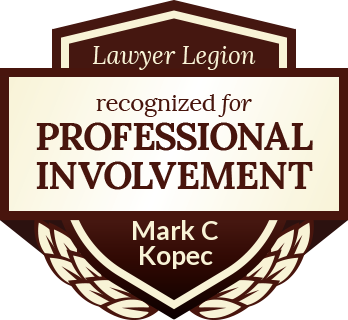Mark Kopec Now
Midwife
The Standard of Care: Midwife and the Scope of Medical Malpractice
Midwifery is one of the oldest professions in healthcare, focused on supporting women through pregnancy, childbirth, and the postpartum period. Like all medical providers, the midwife is subject to the laws of medical malpractice when their actions or omissions deviate from the professional standard of care and cause harm to the mother or baby. Understanding the history, training, scope of practice, and professional limitations of midwives is crucial in the context of a medical malpractice or birth injury claim.
The History and Evolution of Midwifery
Midwifery has deep historical roots, long before the advent of modern obstetrics. For centuries, childbirth was primarily managed by women in the community. Midwives were essential figures, providing continuous support. The professionalization of obstetrics in the 19th and 20th centuries, often driven by male physicians, led to a decline in the public role of lay midwives, particularly in the United States, as birth moved from the home to the hospital.
In the latter half of the 20th century, there was a resurgence in midwifes, driven by a desire for more holistic, less-medicalized birth experiences. This led to the development of different professional pathways and certifications, which dictate the scope of practice today. Even with these developments, however, concern for medical malpractice by the midwife remains.

Training, Credentials, and Professional Associations
The modern midwife profession in the U.S. has three primary, and distinct, certifications:
- Certified Nurse-Midwife (CNM):
- Training: CNMs are Advanced Practice Registered Nurses (APRNs). The path requires a Bachelor of Science in Nursing (BSN), an active Registered Nurse (RN) license, and then a graduate degree (Master’s or Doctoral) in nurse-midwifery from an accredited program (Accreditation Commission for Midwifery Education – ACME).
- Certification: They must pass the national certification exam given by the American Midwifery Certification Board (AMCB).
- Professional Association: American College of Nurse-Midwives (ACNM).
- Certified Midwife (CM):
- Training: CMs follow the same academic path and graduate-level education as CNMs from an ACME-accredited program, but they do not have a prior nursing degree or RN license. They must hold a bachelor’s degree and complete specific science courses.
- Certification: They must also pass the national certification exam given by the AMCB.
- Certified Professional Midwife (CPM):
- Training: CPMs specialize in out-of-hospital birth (home or birth center). Their educational paths are varied, often involving an apprenticeship-based model or graduation from a program accredited by the Midwifery Education Accreditation Council (MEAC). A college degree is not always required.
- Certification: They pass the exam administered by the North American Registry of Midwives (NARM).
The educational and clinical differences between these credentials are significant, and their legal scope of practice can vary widely by state. A medical malpractice case against a midwife may involve examination of the certifications.
Where Midwives Work and Who They Work With
The setting in which a midwife practices often depends on their credential:
- CNMs and CMs primarily work in integrated healthcare settings, including hospitals, private medical practices alongside obstetricians, and freestanding birth centers. They are often fully integrated into the medical team.
- CPMs almost exclusively practice in out-of-hospital settings, such as licensed birth centers or at a client’s home for home births.
Midwives frequently work with a variety of other medical providers, including:
- Obstetrician-Gynecologists (OB/GYNs): For consultation, co-management of complex cases, or transfer of care.
- Nurses (L&D, Postpartum): As part of the hospital or birth center care team.
- Pediatricians/Neonatologists: For newborn care, especially if a baby requires resuscitation or transfer to a neonatal intensive care unit (NICU).
- Maternal-Fetal Medicine (MFM) Specialists: For high-risk pregnancies that require advanced expertise.
Scope of Practice: What Midwives Can and Cannot Do
Midwives focus on low-risk pregnancies and deliveries, providing a physiological and natural approach to birth.
| Midwives (CNM/CM) Can Do | Midwives Cannot Do (Generally) |
| Provide full-scope prenatal, labor, birth, and postpartum care. | Perform surgical procedures, such as Cesarean sections (C-sections). |
| Perform routine gynecological care (Pap smears, family planning, well-woman exams). | Use invasive instruments like forceps or vacuum extractors for delivery (though scope varies by state and credential). |
| Prescribe a wide range of medications (CNM/CM). | Manage complex, high-risk medical conditions (e.g., severe preeclampsia, placenta previa) independently. |
| Manage spontaneous vaginal deliveries and immediate newborn care. | Provide comprehensive care to patients who do not meet low-risk criteria. |
| Order and interpret diagnostic tests (labs, ultrasounds). | Manage operative deliveries. |
Midwife vs. OB/GYN: Training and Collaboration – Medical Malpractice
The fundamental difference lies in their training and philosophy:
| Professional | Training Focus | Core Competency |
| OB/GYN (MD or DO) | Four years of medical school, followed by a four-year residency in Obstetrics and Gynecology. | Surgical intervention and management of high-risk conditions and complications. |
| CNM/CM | Advanced practice nursing/graduate-level academic and clinical training focused on a midwifery model of care. | Management of low-risk pregnancy and birth, with an emphasis on continuous support, patient education, and minimizing unnecessary medical intervention. |
When Midwives Involve OB/GYNs: A core competency of midwifery is the ability to recognize when a deviation from the normal has occurred, necessitating consultation, co-management, or a complete transfer of care to an OB/GYN or other physician. This transfer is required when a patient’s risk profile elevates, such as with:
- Failure to progress in labor despite natural measures.
- Signs of fetal distress (e.g., non-reassuring fetal heart rate).
- Maternal complications like severe preeclampsia or hemorrhage (excessive bleeding).
- Need for surgical intervention (e.g., C-section, complex laceration repair).
- Pre-existing conditions that become high-risk (e.g., uncontrolled diabetes, certain heart conditions).
A failure to timely recognize these complications or to initiate a prompt transfer of care is a common foundation for medical malpractice claims against a midwife.
Types of Medical Malpractice Claims Against Midwives
Midwives are held to the standard of care expected of a reasonably prudent midwife with similar training and experience. Malpractice claims often arise from errors related to their unique scope and the time-sensitive nature of childbirth. Common types of claims include:
- Failure to Monitor: Claims that the midwife failed to adequately monitor the mother or fetus during prenatal care or labor, missing crucial signs of distress (e.g., failure to detect fetal hypoxia leading to brain injury, or failure to monitor blood pressure resulting in undetected preeclampsia).
- Failure to Timely Consult or Transfer: This is a frequent claim, alleging the midwife delayed calling for doctor assistance or transferring the patient to a hospital when signs of a complication, like shoulder dystocia or fetal distress, clearly showing the need for medical intervention outside the midwife’s scope.
- Improper Management of Labor: Claims related to misapplying techniques or inappropriate intervention, such as excessive traction leading to a nerve injury in the baby (like Erb’s palsy), or improper management of postpartum hemorrhage.
- Misdiagnosis or Delayed Diagnosis: Failure to identify or act upon a condition like placental abruption, infection (sepsis), or a prolonged labor that compromises the fetus.
- Documentation Errors: Inadequate or wrong charting that fails to demonstrate proper monitoring or decision-making, complicating the defense of the midwife’s actions.
You can read a Blog post on a reported verdict against a midwife: Fetal Decelerations $29M.
Conclusion on Midwife & Medical Malpractice
In a medical malpractice lawsuit, the plaintiff must prove that the midwife breached the duty of care and that this breach directly caused injury and resulting damages. For midwives, the line between providing supportive, low-intervention care and failing to intervene medically when necessary is where most medical malpractice claims intersect. The essence of their legal duty is a careful adherence to their defined scope of practice and the timely, prudent utilization of their collaborating physician network.
If you or your child has been injured by a midwife, visit our free consultation page or video. Then contact the Kopec Law Firm at 800-604-0704 to speak directly with Attorney Mark Kopec. He is a top-rated Baltimore medical malpractice lawyer. The Kopec Law Firm is in Baltimore and pursues cases throughout Maryland and Washington, D.C.





